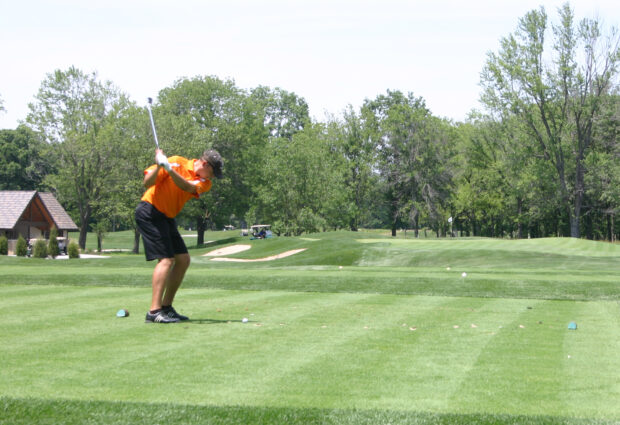HOME | ABOUT US | MEDIA KIT | CONTACT US | INQUIRE
HOME | ABOUT US | MEDIA KIT | CONTACT US | INQUIRE

Changing Clubs | Golfing has long been the compelling attraction at country clubs, but for those that remain open, market forces are compelling additional activities that might serve the whole family.
If global trends are any indication, golfing in the Kansas City region these days is as good as it’s going to get for a while. A decades-long overbuilding boom nationally—which left the U.S. accounting for nearly half the world’s golf courses—has slowed considerably, from a rate of several hundred new courses a year nationwide to less than two or three dozen.
In the meantime, the numbers of older golf clubs across the country have been in decline, part of a trend that has seen the total in the U.S. fall from a peak of 16,052 to 15,372 in a matter of a few years since the recession of 2007 set in.
Losses among member-owned private clubs have been even sharper, falling from 5,200 in 1990 to 4,700 in 2000 and 4,200 in 2010. Among the 1,500 additional private clubs expected to have closed by 2020 is Meadowbrook in Prairie Village, its 136 acres now planned for a sprawling park and mixed-used project.
The global figures come from a study released last month, that was funded by the R&A of St. Andrew’s, Scotland, the sport’s governing body. While the number of courses worldwide is growing, saturation in the U.S. is taking its toll. But that’s not the only factor working against clubs today:
• More people, pressed for time, are looking for additional fitness options, compelling clubs to improve facilities around activities that don’t involve the golf course.
• Rounds of golf conducted for business have been falling, even as more Baby Boomers hit the prime retirement-age golf-ing years.
• And even while more Millennials are moving into the work force in numbers that will eventually dwarf Generation X, they’re bringing with them different ideas of how business is done.
“It’s a hard game,” said Jeff King, head golf pro at Mission Hills Country Club. “The Millennials, they’re just different. They don’t have four or five hours for it, or don’t want to spend that on the course, so the patience level of going somewhere and having to wait every hole, or not enjoying it if they’re a beginner, combined with slow play, and being a long sport time-wise, that all goes back to the unique ideas that people are coming up with” to attract new clients.
Frank Kennedy, president of the board of governors for Milburn Country club, said that even with 24,000 rounds of golf played a year, the club is nonetheless adding new attractions to draw new members. “We’re in the middle of a million-dollar tennis renovation, scraping the courts off, making five new courts, and we bought a bubble to cover three of those for year-round play,” Kennedy said. But that will also create space, he said, for parties, weddings and kid-friendly games like kickball. “Like a lot of clubs,” he said, “we have to think outside the box to get families to come over and drive revenues.”
King noted one development, in particular, that bodes well for a long-term increase in the public’s appetite for golf: The opening of this market’s first TopGolf location this summer in Overland Park. A concept that has taken off nationally, it blends hands-on golfing—at least the driving part of it—with bowling. Each location has bays for golfers who can drive into a common “fairway” rather than individual lanes, and at the same time, patrons can order drinks, dinner or catch another sporting event on the big-screen televisions.
“The concept is brilliant, because you’re going to a bowling alley, basically, but it’s golf,” said King. “It can attract anybody; you don’t have to be a golfer. They have a restaurant, a bar, music—it’s a fun atmosphere.”
And one that can infuse golfing back into the business lunch again, he noted.
“I think that does nothing but help us as golf courses or country club’s to attract more people,” King said. “If they think golf is fun, that’s a good thing for everybody.”